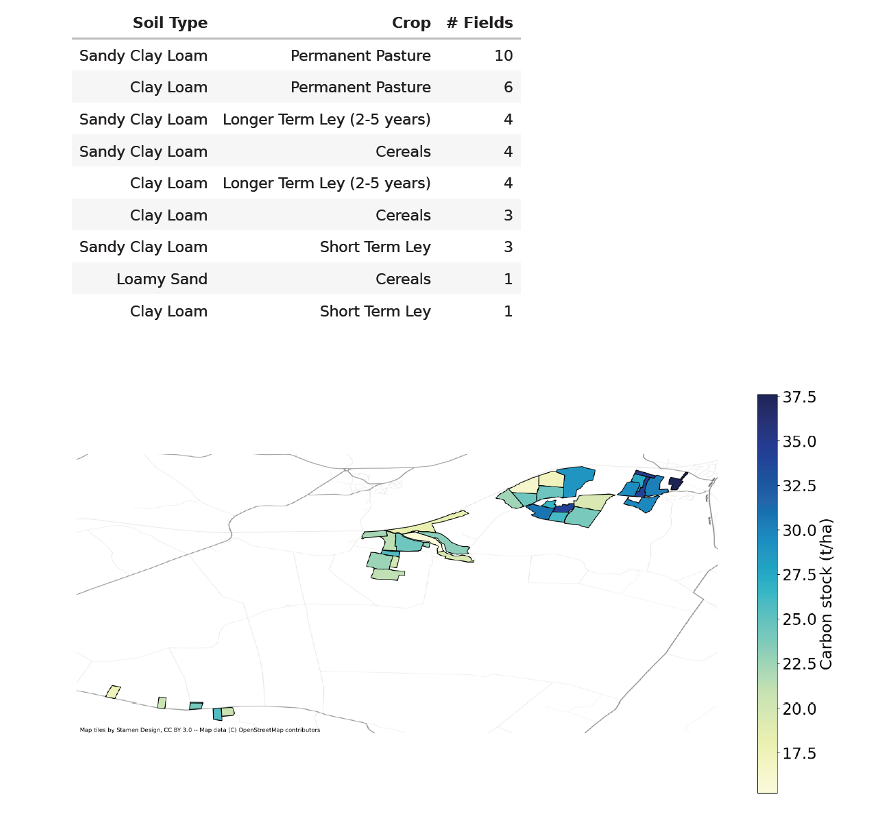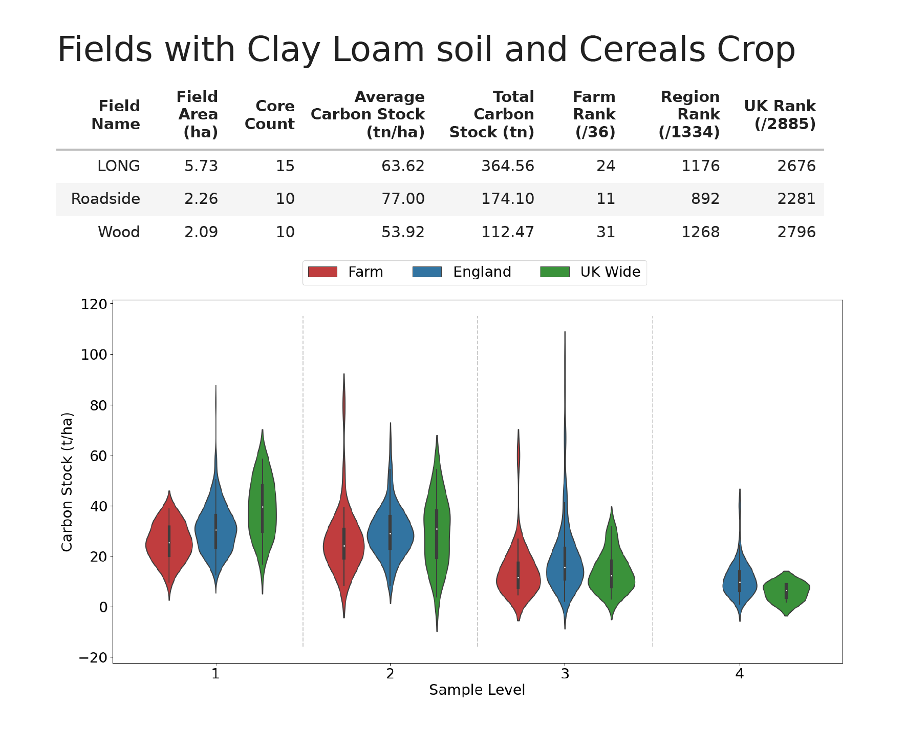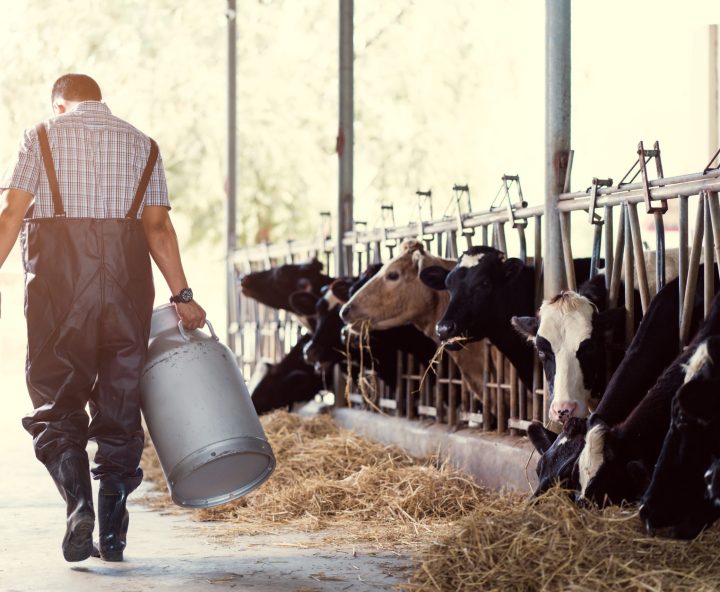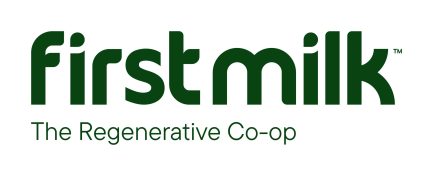Challenge
This Case Study is based on information provided by the AKT2I partners.
First Milk is a British farmer-owned dairy co-operative. Registered in Scotland, it is a B Corp, committed to a regenerative approach throughout its operations, aiming to create a positive impact and make dairy a force for good.
The cooperative comprises 700 UK-wide farming families – members and co-owners of First Milk – whose focus is on ensuring that cows live worthwhile lives grazing rich, diverse pastures that capture and store carbon in soil.
Predominantly a B2B operation, First Milk is a long-term supply partner to many leading organisations in the dairy and food sector; and it operates two creameries which produce award-winning cheeses, whey proteins and specialist dairy ingredients.
This AKT2I project aimed to support First Milk’s aims to increase carbon capture in soil. The project centred on analysing and visualising carbon levels within fields – according to geography, soil composition and farming practice – to improve understanding and better plan for increased carbon sequestration.
First Milk partnered with Professor Craig Michie’s team at the University of Strathclyde (UoS). The two organisations had collaborated before but this AKT2I partnership created rapid momentum to deliver this data analytics/presentation project, providing verifiable measurement of carbon sequestration. This data is important for the sector and has wider impacts in the quest to combat climate change.
The project analysed the data from 108, 600 soil carbon samples across all First Milk farms. The data was then visualised and presented in a readily digestible way that also enabled comparative estimates of performance of individual farms against representative averages. This would mean that farmers could determine how much additional carbon could be sequestered.
The data was presented in a variety of ways through an interactive tool that also produces PDFs of the data in summary format for First Milk to share with its members. Carbon concentration (T per Ha) was presented in terms of farm soil type e.g. clay, loam, sandy loam etc. The dashboard enabled automated report generation on a per farm basis according to the needs of First Milk.
Patterns of carbon capture were clearly visible depending on the farm usage and soil composition. This was generally in line with what would be expected from the understanding that exists, but the project was able to quantify and present the data for every individual farmer and across each of the fields within the farm. This gives farms confidence to change practice as they can calibrate impact against their neighbours with similar soil conditions.
First Milk is now able to discuss with its members how their fields are performing relative to neighbouring farms with different practices. It gives First Milk the capability to integrate this work with changes to farming practice and hence demonstrate how the adoption of regenerative farming practice impacts on soil carbon.
This was not possible up until this point because the data was unwieldy.
Outcome
AKT2I was the perfect vehicle for this initiative because it facilitated a rapid collaboration and turnaround which, while challenging, were critical in making things happen. The fast turnaround provides confidence for success in future work in this area. Essentially, it de-risks that work.
The tight project timescales necessitated having a very a clear set of objectives and deadlines, and regular weekly meetings. The partnership worked well because the balance between domain expertise and technical skills was appropriate. Neither partner could have done the work in this timescale alone. Close partnership between First Milk and the team from UoS, with the input of a seasoned researcher, enabled rapid progress. Had this project required the upskilling of an individual in technical skills it would have taken closer to one year.
A sizeable data cleansing task was undertaken. This would have been challenging had it not been for First Milk having an excellent overview of the data provenance. First Milk now has a clear understanding of the value of the work and the meaning of the data.
This innovation relies on the data interpretation and the simplification of the process so that the farming community can understand where their farms are, relative to their potential, and how to improve them. It provides First Milk with the tools to have meaningful discussions about the performance of its community of farms at a field level and provides independent verification of the impact of interventions on the farm.
Impact
First Milk has a goal to sequester an additional 100,000 tons of carbon across its farming base. The analysis shows where farms have good carbon capture and where it could be improved.
Working with its farming base, First Milk will develop strategies to optimise carbon capture without impacting on the farm operation. This project has given the community a baseline which can be used to measure progress. A measurement campaign downstream will evaluate the impact.
The project was successful in meeting the objectives specified at the output. Some fine tuning in relation to data presentation was required but this was anticipated, and well supported by First Milk. The interface delivered has the potential to interact more widely with First Milk data.
The next steps are to take the findings of the work to all First Milk partners and to present to members of the Digital Dairy Chain project. This is anticipated to seed further collaboration.
Future work with the partnership may involve collaboration with new partners such as SAC Consulting to augment Agrecalc in delivering a full offering of carbon usage/capture advice.
The data provides in independent verifiable measure of carbon sequestration that will be valuable to the sector and more generally to combat climate change.
What they say
“The project has significantly advanced, in a short space of time, our capability to interact with our farm base to discuss with them the impact of regenerative farming practices on soil carbon capture. This is an exciting step towards integrating this analysis with other key data sources we have”.
Further information
Anonymised example outputs from the tool are shown below.
Farm X


If you’d like to find out more about this project, please contact Craig Michie: c.michie@strath.ac.uk







